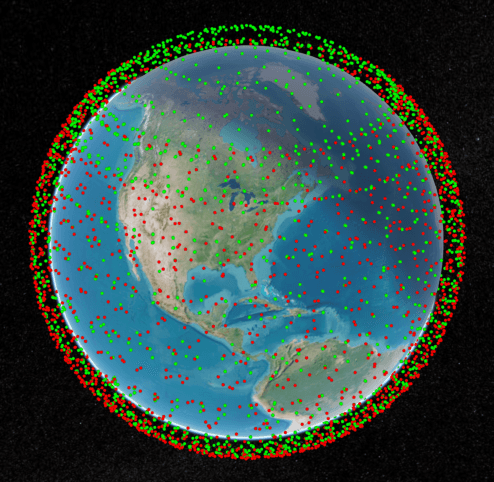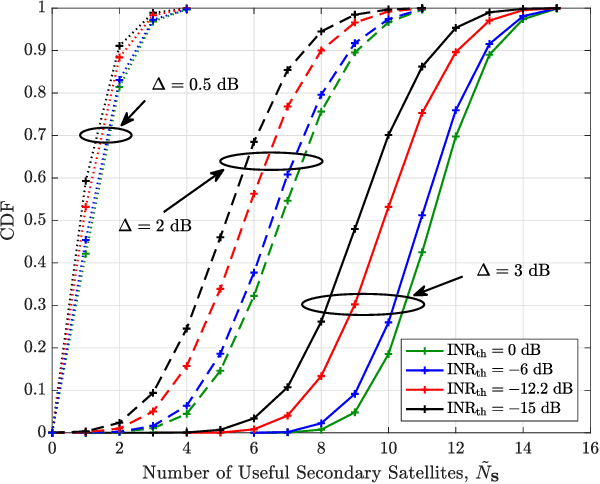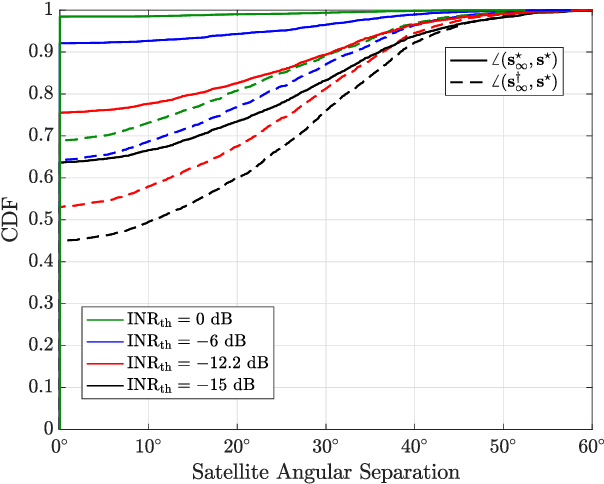Feasibility Analysis of In-Band Coexistence in Dense LEO Satellite Communication Systems
Paper and Code
Dec 01, 2023



This work provides a rigorous methodology for assessing the feasibility of spectrum sharing between large low-earth orbit (LEO) satellite constellations. For concreteness, we focus on the existing Starlink system and the soon-to-be-launched Kuiper system, which is prohibited from inflicting excessive interference onto the incumbent Starlink ground users. We carefully model and study the potential downlink interference between the two systems and investigate how strategic satellite selection may be used by Kuiper to serve its ground users while also protecting Starlink ground users. We then extend this notion of satellite selection to the case where Kuiper has limited knowledge of Starlink's serving satellite. Our findings reveal that there is always the potential for very high and extremely low interference, depending on which Starlink and Kuiper satellites are being used to serve their users. Consequently, we show that Kuiper can protect Starlink ground users with high probability, by strategically selecting which of its satellites are used to serve its ground users. Simultaneously, Kuiper is capable of delivering near-maximal downlink SINR to its own ground users. This highlights a feasible route to the coexistence of two dense LEO satellite systems, even in scenarios where one system has limited knowledge of the other's serving satellites.
 Add to Chrome
Add to Chrome Add to Firefox
Add to Firefox Add to Edge
Add to Edge